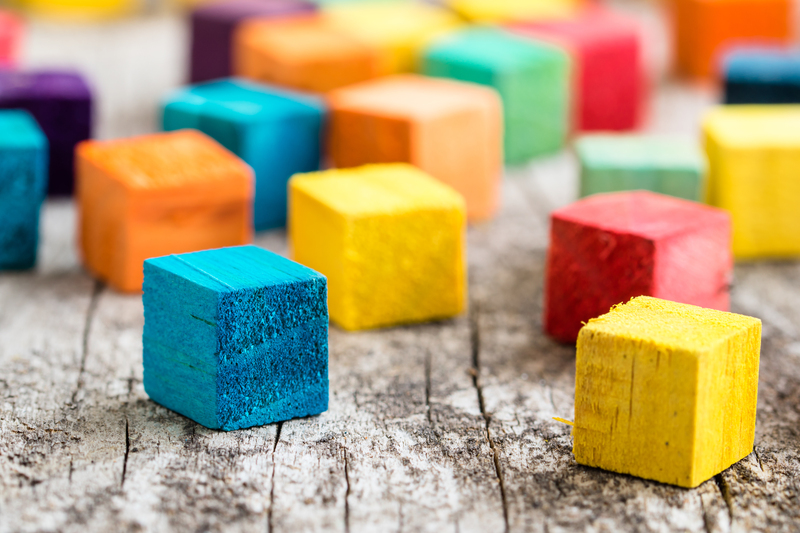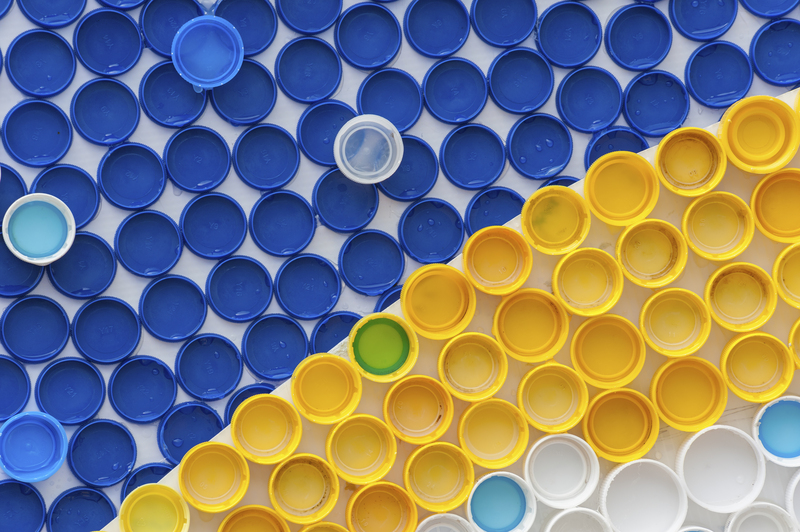Step-by-Step Guide to Disposing of Pots and Pans Responsibly
If you're like most home cooks, you've probably accumulated a collection of old, worn-out pots and pans over the years. When it's time to say goodbye to these kitchen essentials, tossing them in the trash is easy, but not always eco-friendly. Responsible pots and pans disposal ensures that your cookware isn't just ending up in the landfill, but is instead recycled, repurposed, or donated properly. In this comprehensive guide, we'll walk you through how to dispose of cookware responsibly--helping the environment and maybe even making someone's day.
Why It Matters: The Impact of Improper Pots and Pans Disposal
Throwing old pots and pans into the garbage may seem harmless. However, improper disposal can have multiple negative impacts:
- Landfill Overload: Metal cookware doesn't break down easily, contributing to ever-growing landfill sites.
- Resource Waste: Pots and pans contain reusable metals like aluminum and stainless steel.
- Potential Toxins: Nonstick coatings and damaged surfaces can leach chemicals when buried in landfills.
- Missed Reuse Opportunities: Others may benefit from cookware you no longer need.
Fortunately, there are several effective and environmentally responsible ways to dispose of old cookware. Follow the steps below for the best options.

Step 1: Assess the Condition of Your Cookware
The first step to proper pots and pans disposal is evaluating their condition. Ask these questions:
- Is the cookware structurally sound (no cracks or major dents)?
- Are the handles and lids intact?
- Does it still have a usable nonstick surface or is it badly worn or flaking?
- Could someone else make use of it?
*If your pots and pans are in good, gently-used condition, explore donating or repurposing before recycling.*
Step 2: Donate or Gift Usable Cookware
Donating pots and pans extends their life, supports communities, and helps minimize waste. Here's how to find them a new home:
1. Local Charities and Thrift Stores
- Contact organizations like Goodwill, Salvation Army, or local shelters to see if they accept cookware donations.
- Ensure items are clean and free from significant damage.
- Some food banks and kitchens also accept cookware for clients or their own meal prep needs.
2. Give to Friends, Family, or Neighbors
- Post in community groups or neighborhood social media to offer up cookware for free.
- Ask students, new homeowners, or anyone setting up a kitchen if they could use extras.
3. Freecycle and Buy Nothing Groups
- Online platforms like Freecycle or Buy Nothing projects are perfect for rehoming gently used items.
By giving your old pots and pans a second chance, you support sustainability and help someone in need.
Step 3: Repurpose Old Pots and Pans at Home
If your cookware is no longer suitable for cooking but still physically intact, why not get creative? Repurposing cookware is a great way to reduce waste.
- Planters: Turn old pots into quirky outdoor planters or herb gardens.
- Organizers: Use large pans or saucepots to store tools, supplies, or art materials.
- Bird Baths or Feeders: Saucepans and shallow pans can be used as makeshift birdbaths.
- Storage Solutions: Hang small pans on walls as unique storage containers for mail or kitchen utensils.
- Candle Molds: Cast iron and steel pans make excellent, safe candle molds.
Upcycling is both eco-friendly and fun!
Step 4: Recycle Pots and Pans Properly
Recycling cookware is the safest bet once pots or pans are beyond usability or repurposing. Here are key steps to follow:
1. Identify the Material
- Most cookware is made from aluminum, stainless steel, copper, or cast iron. Check the base or handle for metal types.
- Note if there are nonstick coatings or plastic handles, as these may need to be removed.
2. Confirm with Local Recycling Centers
- Contact your municipal recycling center to ask if they accept scrap metal cookware.
- Some curbside recycling programs DO NOT accept pots and pans.
- Scrap metal dealers and dedicated recycling drop-off locations are often the best bet.
3. Prepare Cookware for Recycling
- Clean thoroughly--free from grease and food particles.
- If possible, remove non-metal portions like plastic handles or glass lids (recycle separately if allowed).
- Check for large quantities; scrap yards may weigh items for payment.
4. Special Consideration: Non-Stick and Teflon Pans
- Old nonstick/Teflon pans may contain chemicals that require special processing.
- Ask the recycling center if they accept nonstick-coated cookware.
- Some manufacturers offer return or recycling programs for their brands (e.g., T-fal, Calphalon).
Never send old pots and pans to landfills without first exploring dedicated recycling or take-back programs.
Step 5: Check for Manufacturer Take-Back Programs
Major cookware manufacturers recognize the need for sustainability and offer pot and pan recycling initiatives. Brands such as GreenPan, Calphalon, Le Creuset, and T-fal sometimes provide mail-in recycling or trade-in deals.
- Check company websites for recycling or exchange programs.
- Follow the mailing instructions precisely to avoid delays.
- You may receive a discount on new products by responsibly recycling your old ones!
Step 6: Arrange for Bulk or Hazardous Waste Pickup (If Needed)
If you're dealing with a large number of old pots and pans--perhaps from a restaurant renovation, estate clean-out, or similar--the municipal waste management service or a local junk collection company may offer scheduled pickups. In some cases, especially with vintage nonstick or exotic materials, special disposal may be necessary due to chemicals in coatings.
- Contact your city's solid waste department to inquire about bulk metal pickups.
- Never discard toxic or coated pans with regular household waste without proper approval.
What About Ceramic, Glass, or Enamelware Cookware?
Not all old cookware is metal: glass, ceramic, and enamel pots require separate consideration.
- Ceramic and Porcelain: Most recycling centers do NOT accept these. Check for construction waste centers or reuse as garden mulch.
- Glass: Unless your glassware is clear and labeled as recyclable, do not put oven-safe glass in regular recycling.
- Enamel: If chipped or cracked, these may need to be disposed of in regular trash unless your center takes scrap with enamel coatings.
*As always, check with your local recycling provider on specific rules and drop-off points!*
Common Mistakes to Avoid in Pots and Pans Disposal
- Throwing recyclable cookware in regular trash--always look for an alternative!
- Donating dangerously damaged items that could pose a hazard to new users.
- Ignoring local regulations--disposal rules vary and you could face fines for non-compliance.
- Sending nonstick pans to the wrong recycling stream.
- Not removing non-metal elements (e.g., plastic handles that contaminate metal recycling)
Extra Eco-Friendly Tips: Minimizing Future Cookware Waste
- Buy quality cookware that lasts longer, reducing the frequency of disposal.
- Choose recyclable or natural materials like cast iron or stainless steel.
- Take proper care of cookware to maximize its usable life (avoid high heat, metal utensils on nonstick, etc.).
- Purchase only what you truly need--minimalism helps the planet!

FAQ: Responsible Pots and Pans Disposal
Can nonstick pans be recycled?
Most nonstick pans cannot go into regular curbside recycling due to their chemical coatings. Seek out scrap metal centers that accept nonstick or check for manufacturer take-back programs.
Will thrift stores take my scratched cookware?
Many charities refuse badly scratched or damaged pots and pans (especially with flaking nonstick). Always check with the organization first and ensure items are clean and safe.
Is throwing pots and pans in the bin illegal?
It's not usually illegal, but it's environmentally unfriendly and discouraged by many cities that offer metal recycling options. Check local rules.
What do I do with vintage or antique cookware?
*Vintage cast iron and copper cookware may have resale or collector value!* Research your items before tossing or recycling.
Can I recycle glass lids with the pans?
Glass cookware lids are usually not recyclable with household glass because of their unique material. Check with your local center.
Conclusion: Making a Lasting Impact with Responsible Pots and Pans Disposal
Properly disposing of old pots and pans isn't just about decluttering--it's about making a positive impact on the environment and supporting a more sustainable kitchen. Whether you choose to donate, recycle, repurpose, or utilize manufacturer take-back programs, every step you take to properly dispose of cookware helps reduce waste and conserves resources.
Make it a habit to assess, give away, recycle, or repurpose old kitchenware in a way that puts the planet first. With a little effort, you can ensure your unwanted pots and pans serve a new purpose, long after you've stopped using them.
For any additional questions or unique disposal needs, contact your local recycling service or check eco-friendly organizations for the latest guidance. Your responsible actions in disposing of pots and pans pave the way for a cleaner, greener future!






